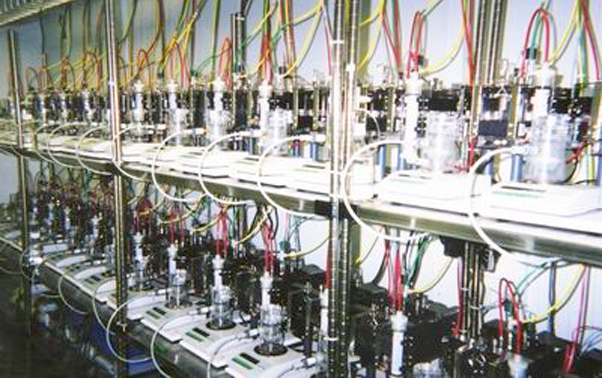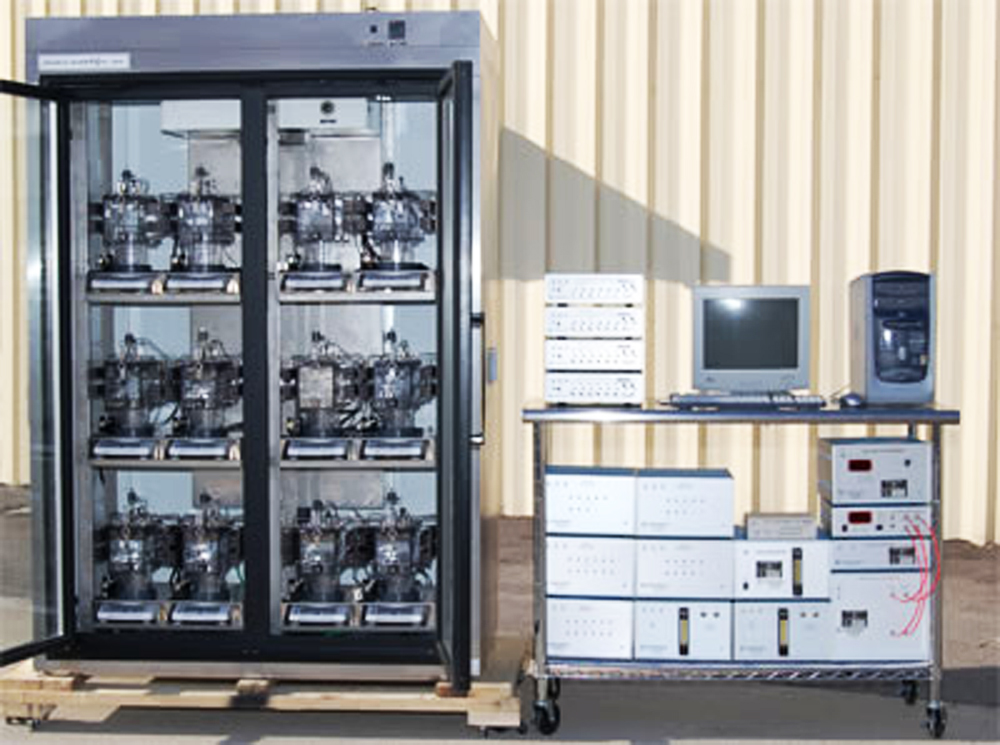Evsikova1 project protocol
Activity and food and water intake of 14 inbred strains of mice at 6 months of age (2009)
Evsikova CM, Svenson KLWith: Schultz D, Godfrey D
Project protocol — Contents
Workflow and sampling
Equipment and supplies
Reagents and solutions
Procedures
Definitions
Data
ReferencesWorkflow
Comprehensive cage monitoring system (CCMS) prepared and calibrated CCMS Mice weighed before and after test balance scale starting and ending body weights Mice monitored for activity, food, and water consumption computer, Oxymax software ambulatory activity, rearing, food, and water intakes
- Comprehensive Lab Animal Monitoring System (CLAMS) (Columbus Instruments, Columbus, OH)
- Columbus Instruments (available through Columbus Instruments, USA)
- 180C System Sample Pump
- Oxygen and Carbon Dioxide Sensor Systems
- Oxymax Equal Flow Multi-Animal Air Supply System
- OPTO-M3 Activity Monitor
- Slipper Tube Monitoring System
- Control Air Box
- Control gas: 21% oxygen, 0.5% carbon dioxide, nitrogen to balance (BOC, Advantage Gases and Tools, USA
- Mouse chamber consisting of:
- Plastic cage
- Metal floor grid
- Food hopper
- Glass dryer column
- IsoPad (fluid absorbent) sheets, Harlan, USA
- Scale, Mettler-Toledo, USA
- Computer system Windows 2000 Communication port (included)
- Oxymax analysis software
- Magnesium Perchlorate, Sigma, USA
- Calcium sulfate, anhydrate, Sigma, USA
- Lab Diet, 6% fat, PMI Nutrition International, LLC, USA
- Purified water, (Purification System D6311), Barnstead/Thermolyne, USA
- 95% Ethanol
- Steris CV Medicated Lotion Soap
Acclimation to test conditions
In general all mice are acclimated for at least 1 h in the testing room.
Procedure for measuring metabolism, activity, and sleep
The Columbus Instruments Comprehensive Cage Monitoring System provides simultaneous measurements of CO2 production, O2 uptake, food and water intake, locomotor activity, and circadian patterns in unrestrained mice. Simultaneous measurements of the major parameters affecting whole body metabolism enable a more complete assessment of energy balance and behavior in each mouse.
I. Cage monitoring system preparation
a. The Comprehensive Cage Monitoring System (CCMS) is checked and setup for the following:(1) 8 individual mouse chambers are prepared and directly linked to a Windows or PC computer (used to integrate data recordings from multiple parameters).
(2) To each of the 8 chambers, O2 and CO2 gas analysis systems are attached.
(3) Each chamber is then equipped with Mettler Toledo Scales for measuring food consumption and tared before use.
(4) Drinking tubes and food hoppers are filled and water lines checked and corrected for kinks.
(5) Cage floors are lined with absorbent pads.
(6) Airflow is tested and calibrated for air composition and flow rate. In line desiccant (magnesium perchlorate) is changed (under hood using gloves) before every 5th experiment and the used material disposed of through hazardous waste disposal.
(7) Infrared beams are turned "ON" in each chamber to monitor movements (in X,Y, and Z directions).b. CCMS is calibrated using a cylinder gas tank containing 0.5% CO2 and 20.5% O2 balanced with N2.
c. Water lines and volumetric tubes are flushed to remove any air bubbles prior to run.
d. CCMS is equipped with an equal flow of air supply regulator and an expansion interface circulation pump to tightly regulate the mouse's environment.
e. Mice are weighed immediately prior to placement into the test chamber.
f. The lid is replaced and a previously determined quantity of ground food (6 g/day experimental run time) is added.
g. Scales containing food are tared and temperature and humidity in test room are logged at the beginning and throughout the experiment.II. Cage monitoring activity
A typical experimental run lasts from 24 to 72 h.
a. Activity in XYZ directions is monitored by analyzing disruption of infrared beams. Two arrays of infrared beams (2.5 cm inter-beam distance) surround each cage. One array is situated 3.2 cm above the floor of the cage and a second array at 7 cm above the floor.
b. Monitored data are formatted as total activity counts and total ambulatory counts (defined as two consecutive beam breaks). All CLAMS recorded data are dated and time-stamped on a fixed sampling schedule for each mouse for multiple variables including total activity, ambulatory activity, and rearing.
c. Data are recorded each time a metabolic measurement is taken.
d. Activity measurements are expressed in normalized units of beam/breaks per min.
e. In all cases data are recorded over three transitions from light to dark and three from dark to light.II. Cage monitoring food and water consumption
Throughout the 24 to 72 h run, data are collected using cumulative food consumption and volumetric drinking.
a. Starting body weights are determined just before testing.
b. Food containers mounted on electronic weight scales are monitored continuously using a computer, while cumulative consumption is monitored and stored each time a metabolic measurement is recorded.
c. The act of drinking reduces pressure in the water column and is converted to volume of water intake using pressure transducers.
d. At the completion of the run mice are weighed and returned to their home cages.
e. Output data is expressed as mass of food consumed (resolution 0.1 g) and volume of liquid consumed (resolution 0.02 mL).For additional information on the system: comprehensive lab animal monitoring system (CLAMSTM).
Ambulatory activity: movement producing sequential horizontal beam breaks of different beams (i.e. subset of total)
Rearing: produced by vertical movement when the mouse stands on its hind legs to break elevated beam array
Data collected by investigator
body weight
- test start
- test end
behavior — locomotor activity (daily, light, dark)
- ambulatory activity (beam break triplets during 24h)
- rearing activity (beam break triplets during 24h)

